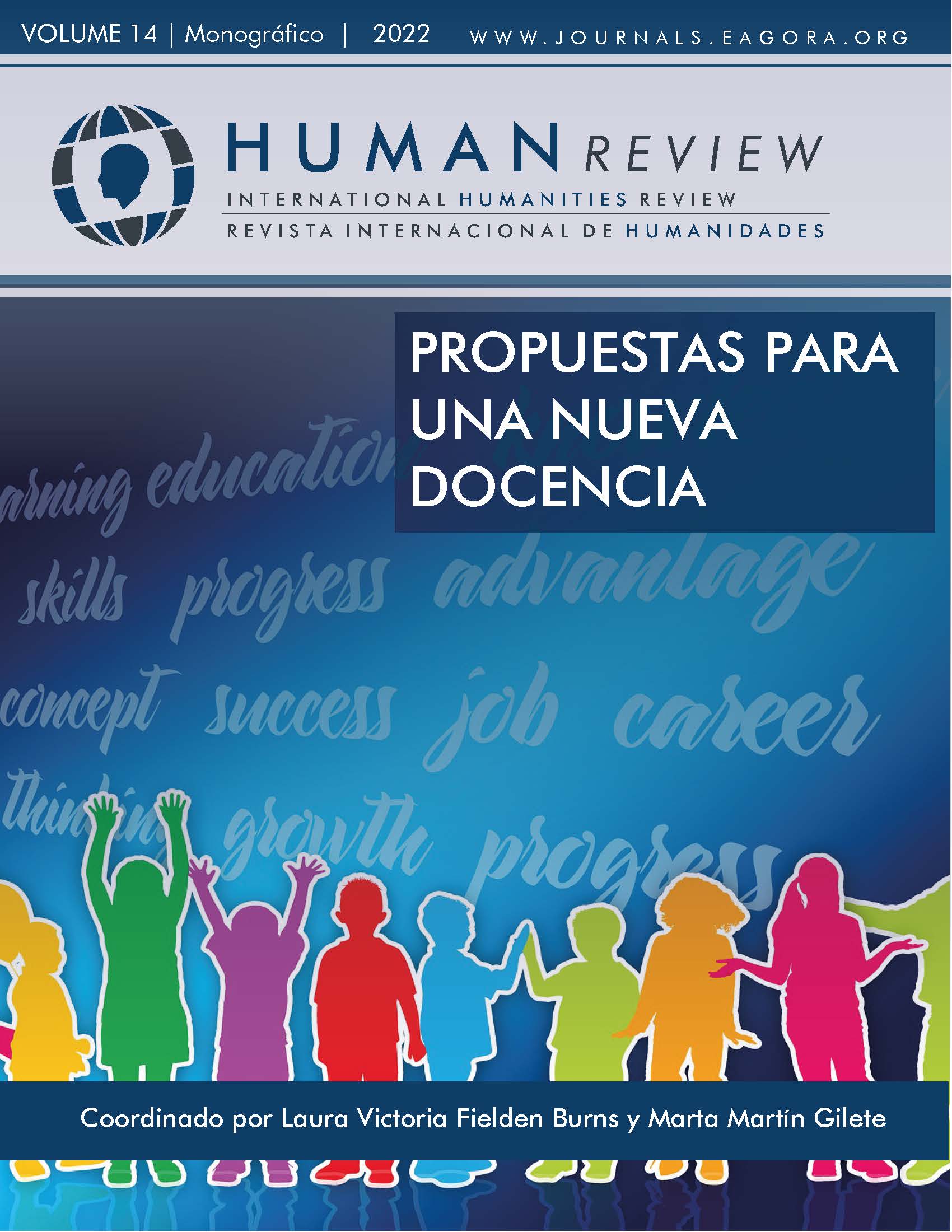Intercultural procedural competence
El componente interaccional
Keywords:
Intercultural Competence, E-learning, Interactional Competence, Pluricultural Competence, Diversity, Globalization, ProceduralAbstract
Institutions such as the Council of Europe or I. Cervantes and experts such as Byram or Deardorff, among others, have developed models and educational bases that shed light on teachers to design programs focused on the development of a multicultural citizenship immersed in diversity.
This study analyzes whether these models allow the establishment of descriptors that define intercultural competence from a procedural perspective. In this way, it is intended to establish an analysis of the theoretical and practical bases of intercultural competence, both at the level of the theoretical framework and at the level of student performance.
References
Austin, J. L. (1962). How to do things with words. Clarendon Press.
Belz, J. A. (2002). Social dimensions of telecollaborative foreign language study. Language Learning and Technology, 6(1), 60–81.
Belz, J. A. (2005). Intercultural questioning, discovery and tension in internet-mediated language learning partnerships. Language and Intercultural Communication, 5(1), 3-39. https://doi.org/10.1080/14708470508668881
Blake, R. J. (2008). Brave new digital classrooms: Technology and foreign-language learning. Georgetown University Press.
Bennet, M.J. (1986). A developmental approach to training for intercultural sensitivity. Intercultural journal of Intercultural Relations, 10, 179-196.
Byram, M. (1997). Teaching and assessing intercultural communicative competence. Multilingual Matters.
Canto, S. y Jauregi, K. (2017). Language learning effects through the integration of synchronous online communication: The case of video communication and Second Life. Language Learning in Higher Education, 7(1), 21–53. https://doi.org/10.1515/cercles-2017-0004
Chomsky, N. (1965). Aspects of the theory of syntax. MIT Press.
Comisión Europea (2 de junio de 2022). Espacio Europeo de Educación. https://ec.europa.eu/education/education-in-the-eu/european-education-area_es
Deardorff, D. K. (2006). Identification and assessment of intercultural competence as a student outcome of internationalization. Journal of Studies in International Education, 10(3), 241-266. https://doi.org/10.1177/1028315306287002
Deardorff, D. K. (2009). Assessing complex general education student learning outcomes. Assessing intercultural competence, 6, 65-79. https://doi.org/10.1002/ir.381
Deardorff, D. K, de Wit, H., Heyl, J. & Adams, T. (Eds). (2012) The SAGE Handbook of International Higher Education. Intercultural Competence: An Emerging Focus in International Higher education. http://dx.doi.org/10.4135/9781452218397.n16
Gesteland, R. (2012). Cross-cultural business behavior: A guide for global management. 5ª edición. Copenhagen Business School Press.
Hall, E.T. (1959). The Silent Language. Doubleday.
Hofstede, G. (1980). Culture´s consequences: international differences in Work-related values. Sage.
Inglehart, R. (1998). Modernización y postmodernización: El cambio cultural, económico y político en 43 sociedades. CIS.
Instituto Cervantes. (2006). Plan Curricular del Instituto Cervantes. Biblioteca Nueva.
Instituto Cervantes. (2002). Marco Común Europeo de Referencia para las Lenguas: aprendizaje, enseñanza, evaluación. Anaya.
Llorián, S. (2007). Entender y utilizar el Marco común europeo de referencia desde el punto de vista del profesor de lenguas. Santillana.
Meyer, E. (2014). The culture map: breaking through the invisible boundaries of global business. Public Affairs.
Mü ller-Hartmann, A. (2000). The role of tasks in promoting intercultural learning in electronic learning networks. Language Learning and Technology, 4(2), 129-147.
O’Dowd, R. (2021). Virtual exchange: Moving forward into the next decade. Computer Assisted Language Learning, 34(3), 209-224. https://doi.org/10.1080/09588221.2021.1902201
O’Dowd, R. (2012). Intercultural communicative competence through telecollaboration. En J. Jackson (Ed.), The Routledge handbook of language and intercultural communication (pp. 342–358). Routledge.
O’Dowd, R. (2003). Understanding the ‘other side’: intercultural learning in a Spanish-English e-mail exchange. Language Learning & Technology, 7(2), 118-144.
Schank, R.C. (2005). Lessons in learning, e-learning and training: perspectives and guidance for the enlightened trainer. Pfeiffer.
Schwartz, S. (1994). Are there universals aspects in the structure and contents of human values? Journal of social issues, 50, 19 - 45.
Trompenaars, F. y Hampden-Turner, C. (1993). Riding the waves of culture: understanding cultural diversity in business. Intercultural Management Publishers.
UNESCO. (2020). Manual for Developing Intercultural Competencies: Story Circles. Routledge.
Thorne, S. L. (2010). The ‘intercultural turn’ and language learning in the crucible of new media. En F. Helm y S. Guth (Eds.), Telecollaboration 2.0 for language and intercultural learning (pp. 139-164). Peter Lang.
Triandis, H. (1994). Culture and social behavior. McGraw-Hill.
Vinagre, M. (2017). Developing teachers’ telecollaborative competences in online experiential learning. System, 64, 34–45.
Young, R. (2008). Language and interaction: an advanced resource book. Routledge.
Young, R. (2011). Interactional competence in language learning, teaching, and testing. En E. Hinkel (Ed.), Handbook of research in second language teaching and learning, 2, 426–443. Routledge.
Young, R. (2013). Learning to talk the talk and walk the walk: Interactional competence in academic spoken English. Ibérica, 25, 15-38.

